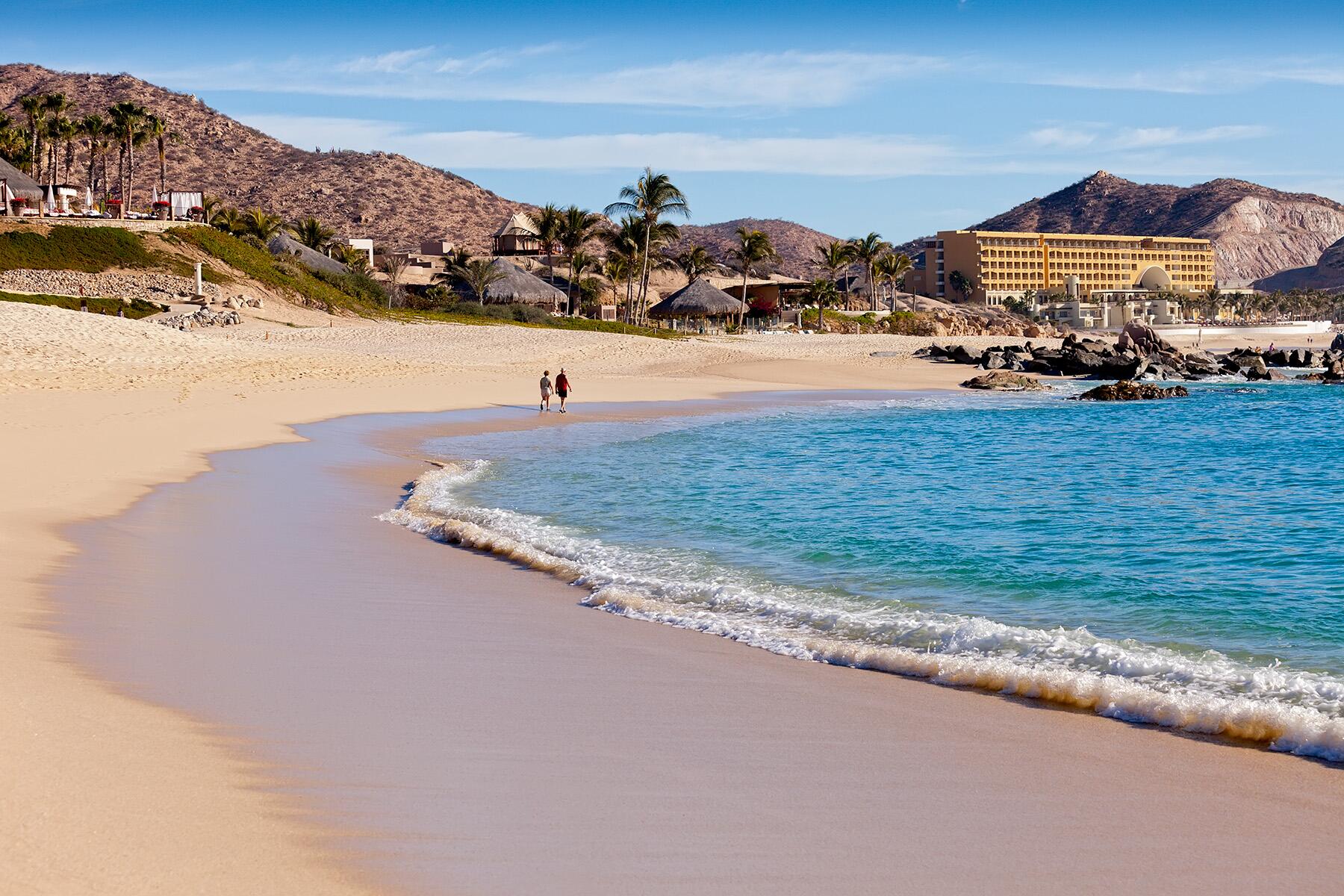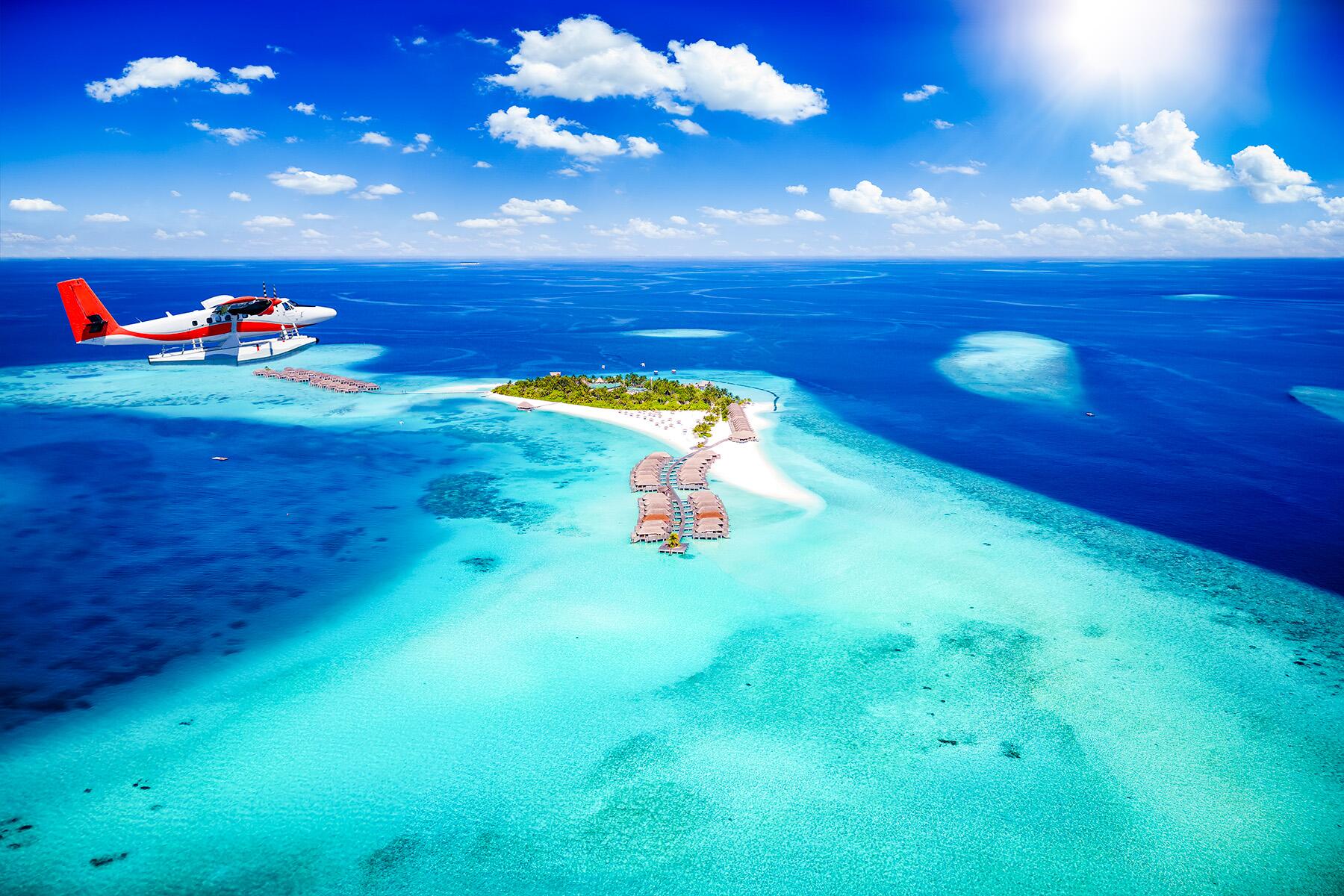- ⁄
- Travel News
- ⁄
- Beaches •
- Travel Tips
As temperatures rise, so do the number of people heading to beaches and pools to cool down. Here's how to stay safe next time you head to the water.
The dog days of summer are here, and a number of areas around the U.S. (and the world) are experiencing record high temperatures, which means people are heading to water in droves to beat out the heat. Whether it’s the pool, the ocean, a river, or a water park, it’s good to keep water safety tips in mind, especially if you’re traveling with children. According to the American Red Cross, drowning is the number one cause of death for children. Here are 11 tips on how to stay safe as you cool down this summer.
Top Picks for You
Always Check the Signage Before Getting in the Water
When heading to the beach, the pool, the river, or the water park, take a moment to read any signage. These signs, like the “Be Shark Smart” signs you’ll see at Cape Cod’s beaches, give you an idea of what the conditions in the area are like. You should also be on the lookout for signs that warn against shallow water or obstructions (such as rocks or tree stumps) that aren’t visible in the water. It’s also good to find out what the flags at ocean beaches mean. They indicate essential information like designated lifeguard monitored areas or places where the current or undertow are dangerous. Monitor flags throughout the day as conditions do change. If you’re traveling to the Florida Coast, the Florida Coastal Management Program has a Beach Warning Flag Program that’s worth checking out.
Don’t Skip the Life Jackets
Always wear a U.S. Coast Guard-approved life jacket, especially if you’re on a boat, kayak, or paddleboat. In many cases, wearing a life jacket is the law. But, it’s also good practice to wear one if you or your children aren’t strong swimmers or maybe taking a dip in deep or potentially rough waters. “As a lifelong sailor, I find it important to wear a lifejacket that fits you well,” says Arabella Denvir, Sailing Instructor at the Tides Inn. “Water and weather are unpredictable, and even the most experienced sailors and swimmers should have lifejackets in case of an emergency.”
Recommended Fodor’s Video
Tips for Snorkelers and Divers
Alex Fogg, Coastal Resource Manager at Destin-Fort Walton Beach, Florida, says, “Make sure you are prepared. We have created new reef sites for snorkelers and divers of various skill sets to enjoy. Each site now has a map with important information about how to access the reef safely.” Fogg also suggests that snorkelers and divers have a dive flag and some sort of flotation (such as a paddleboard or kayak) to allow them to rest. “While you may be an expert swimmer, it’s nice to be able to rest and not tread water for an hour,” adds Fogg.
Share Your Plans in Advance
Whether you are going boating, swimming, snorkeling, or diving, Fogg also advises letting someone back on the mainland know what your plans are so they can get help in the event of an emergency. This could mean sharing the details with a loved one of your departure, location, and expected return time. Another tip? “File a float plan for each trip and leave it with the marina,” suggests Stormy Pearson, Marina Director at the Tides Inn. “A float plan includes a description of your boat, who is on board, a description of the safety equipment you are carrying, where you expect to be, and when you expect to be there.” You can find a handy dandy printout on the Coast Guard website.
Avoid Swimming Alone
Choosing a place to go for a dip with a lifeguard on duty is always the smart option, but it’s not always possible. If you do plan to swim alone, make sure you share your plan with someone. If you’re traveling with children, make sure they are never left unattended near water, even if they can swim. It’s also good to keep in mind for adults too. It’s easy to get distracted, and injuries can occur, especially when walking (or running) on wet surfaces.
Consider Designating a Water Watcher
As the name suggests, a designated water watcher is someone who’s designated to watch those in the water. If you’re with a large group, insist on everyone taking their turn as a water watcher so everyone can have time to relax. This is your vacation, so you may want to read an e-book or check out your social media accounts — having a water watcher allows for a designated set of eyes to be on those in the water so that others can have their eyes on their device. This is particularly useful if you’re swimming in an area where a lifeguard is not on duty.
Keep an Eye on Weather and Water Conditions
The weather tends to change at a moment’s notice, especially near water, so make sure you check and recheck your preferred weather sources as you don’t want to be stuck in the water if lightning strikes. Also, be aware of water conditions. Is the area tidal? Is the water clear? How deep is it? Are there obstructions in the water? “In the Northern Neck region of Virginia, we are known for our delicious oysters,” says Denvir. “With these delicacies come shells that are scattered throughout the shoreline. I recommend wearing shoes to avoid sharp cuts from oyster shells.”
Wear Bright Colors
“Swimsuits that blend in with the water make it hard for you to be seen whether at a water park, beach, or lake,” says Lauren Lowery, Dollywood’s Splash Country Operations Manager. Her suggestion? Go for bright colors like pinks, reds, oranges, or all of the above!
Stay Hydrated
Lowery also notes that dehydration can cause cramps while you’re swimming, so make sure you bring enough water for everyone in your party. WebMD recommends that children ages 4 to 8 drink about 5 cups of water daily, while children ages 9 to 13 should drink around 7 or 8 cups daily. That amount goes up as they get older, so about 8 to 11 cups for those older than 14. Of course, if there’s high heat and humidity, those amounts should be increased.
Apply Sunscreen Often
While technically, this isn’t a water safety tip, wearing sunscreen is essential for a day in the sun. LEGOLAND New York Resort reminds their guests to put sunscreen on before they leave the house to give it time to prepare the skin, and not to forget to reapply. According to the website for Johns Hopkins Medicine, sunscreen should be reapplied every two hours, especially after swimming or sweating. Try to look for waterproof sunscreen to ensure you’re covered even while in the water.
Leave the Partying for Dry Land
During the summer, celebrations tend to happen on or near the lake, by the ocean, or on a boat. With these celebrations sometimes comes alcohol, but it’s important to keep in mind that drinking or taking drugs can impair your judgment, reaction time, and attention. It’s best to think twice about partaking in these activities until you and your family are safely away from the water. If it’s going to happen, make sure you follow the above tips, wear life vests, and designate a water watcher.
CPR
CPR saves lives. According to the CDC, “More children ages 1–4 die from drowning than any other cause of death except birth defects.” And, drowning is the second leading cause of unintentional injury death (after motor vehicle crashes) for children ages 1–14. These are some pretty shocking facts that no parent wants to become part of. Luckily, the Red Cross offers numerous safety courses, including CPR, at more than 500 locations around the country; there are even free online courses. The National CPR Foundation also offers safety courses.




